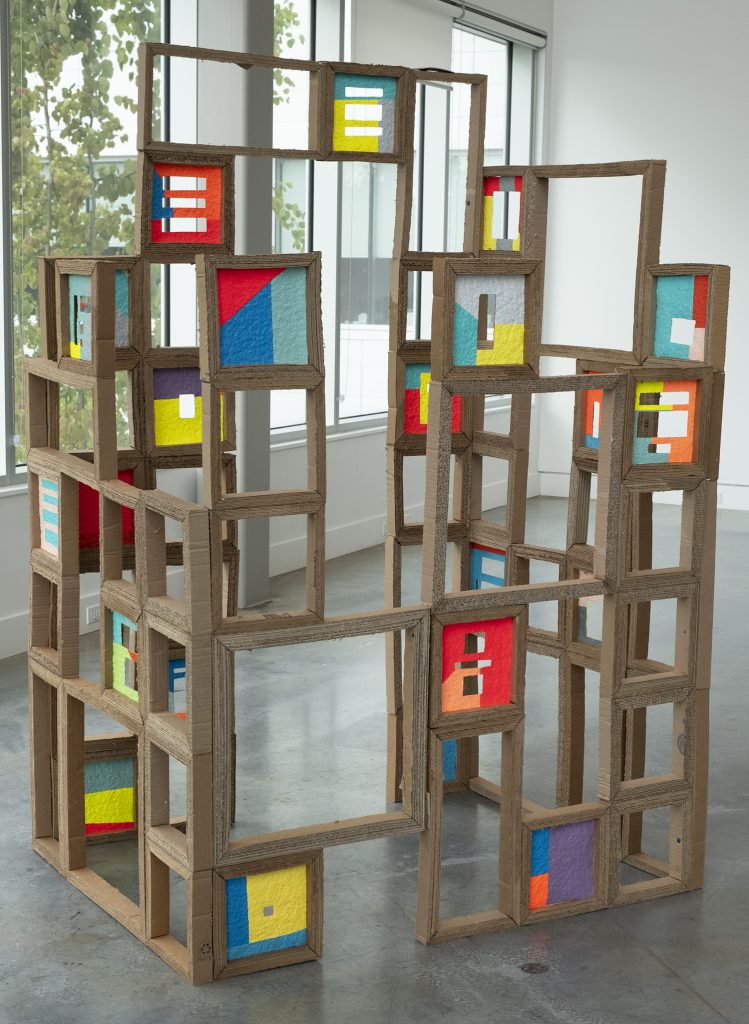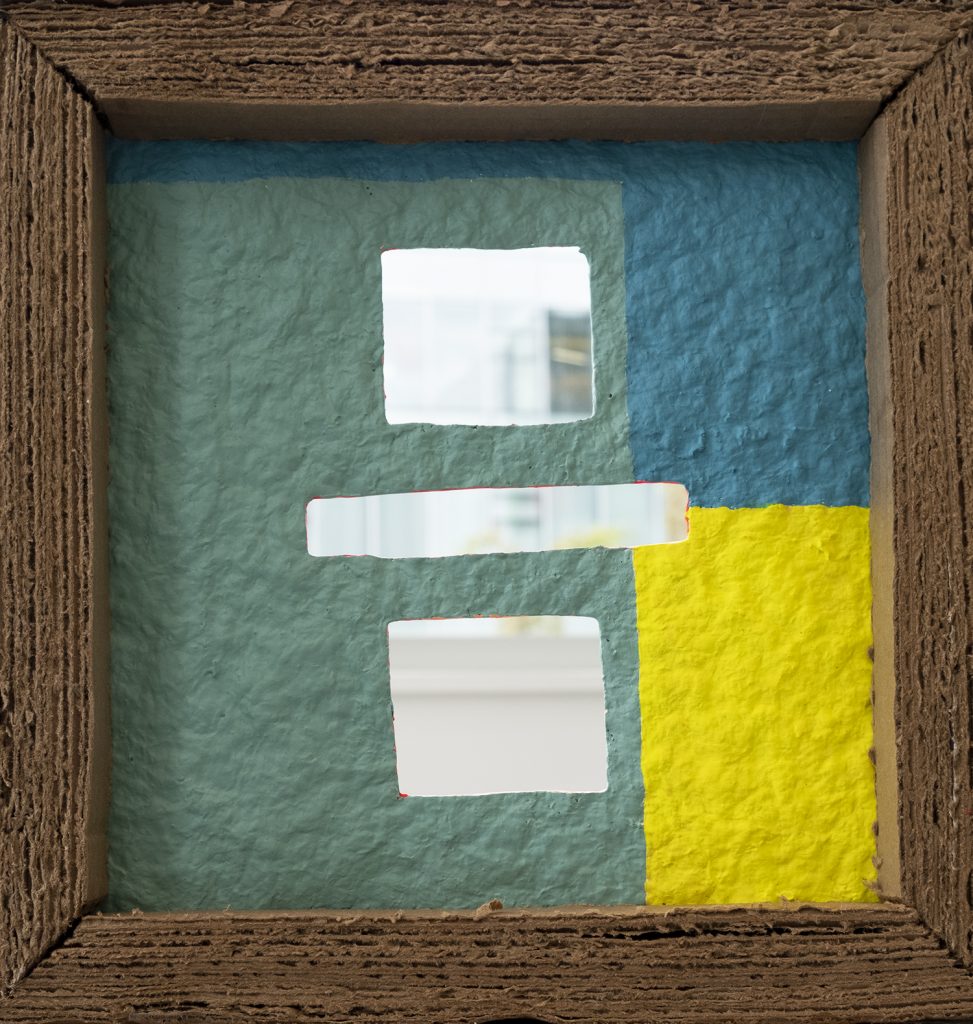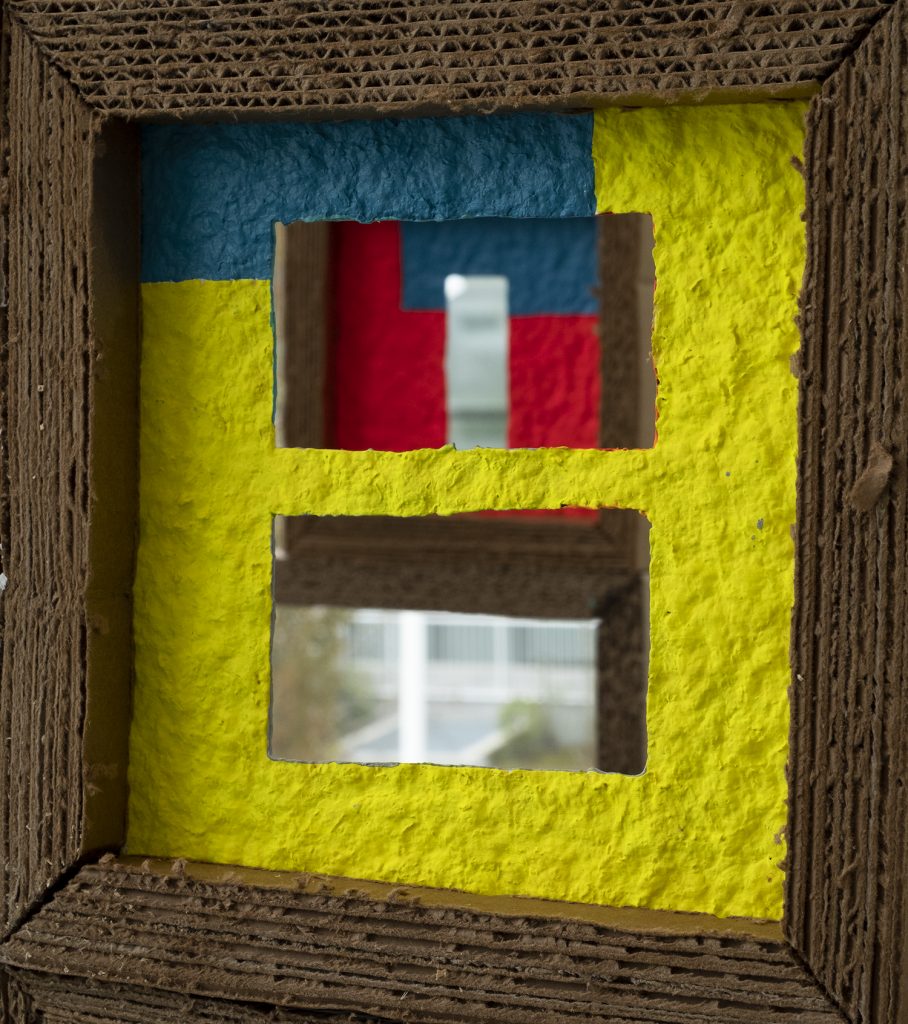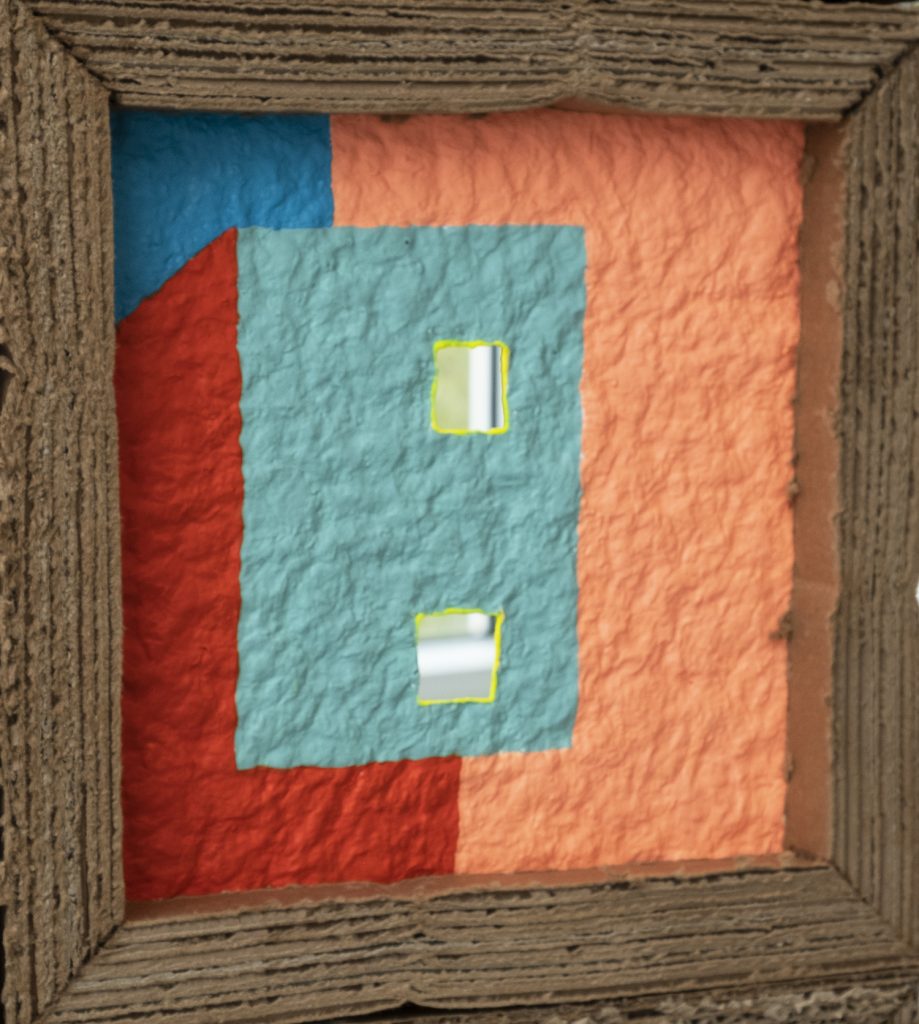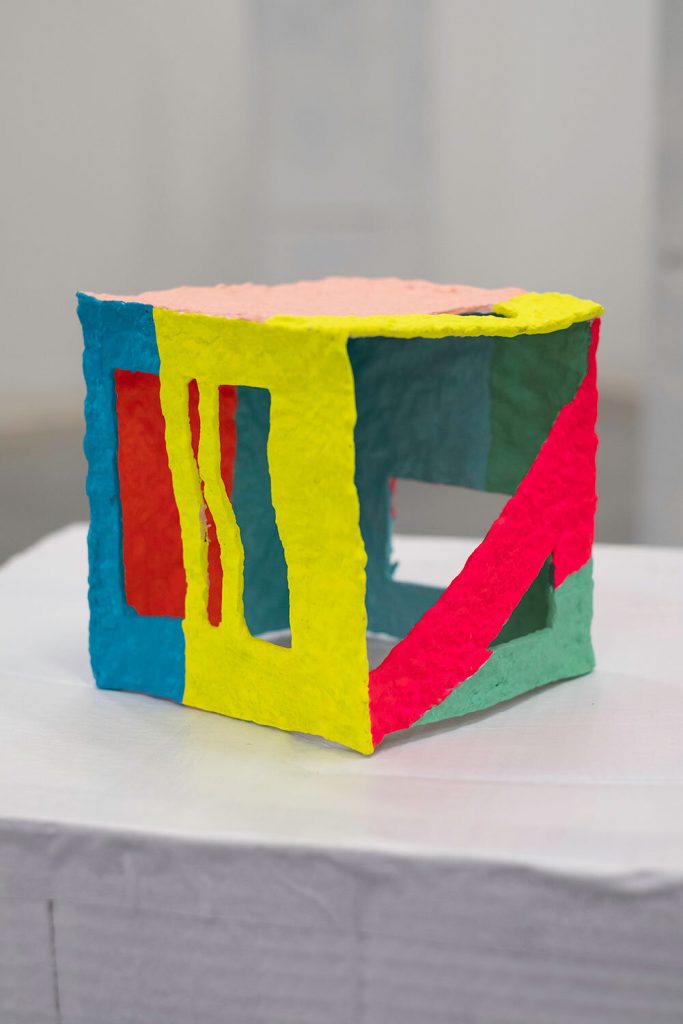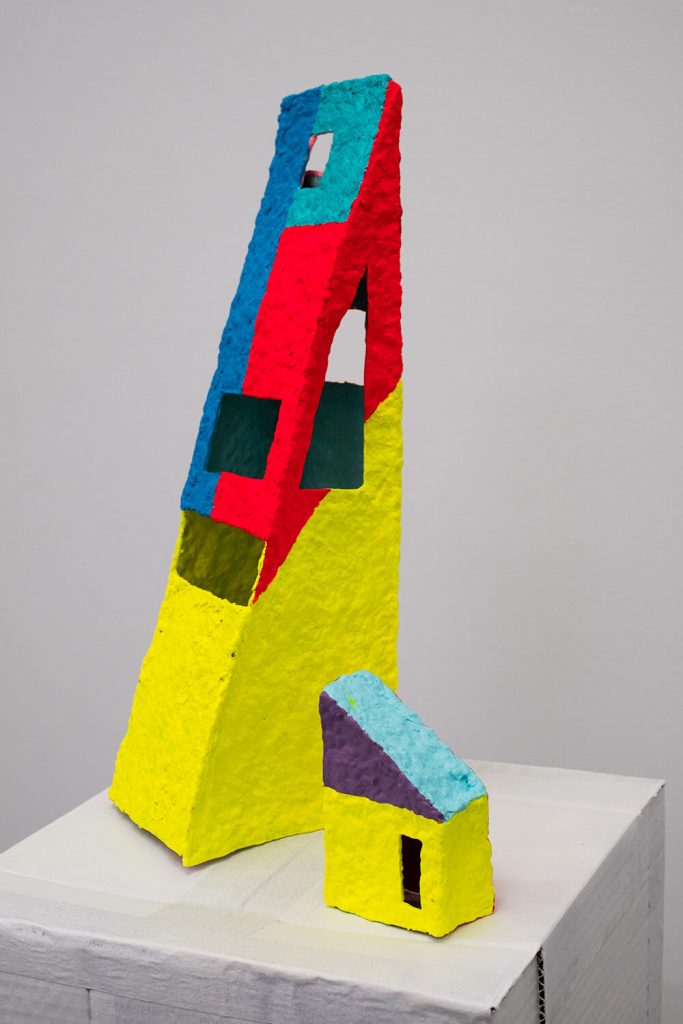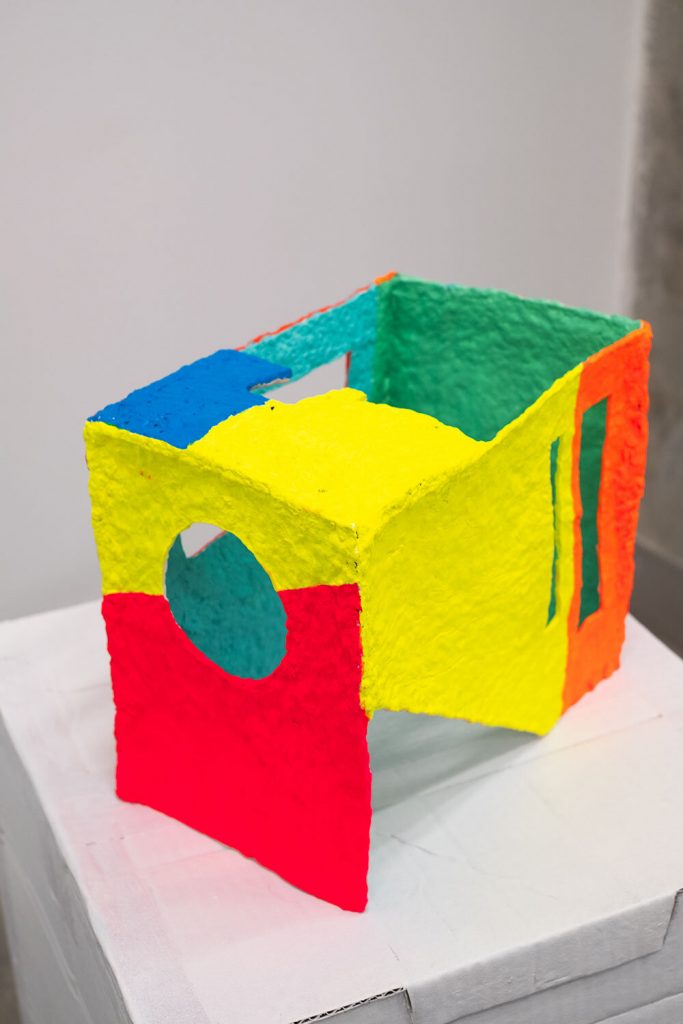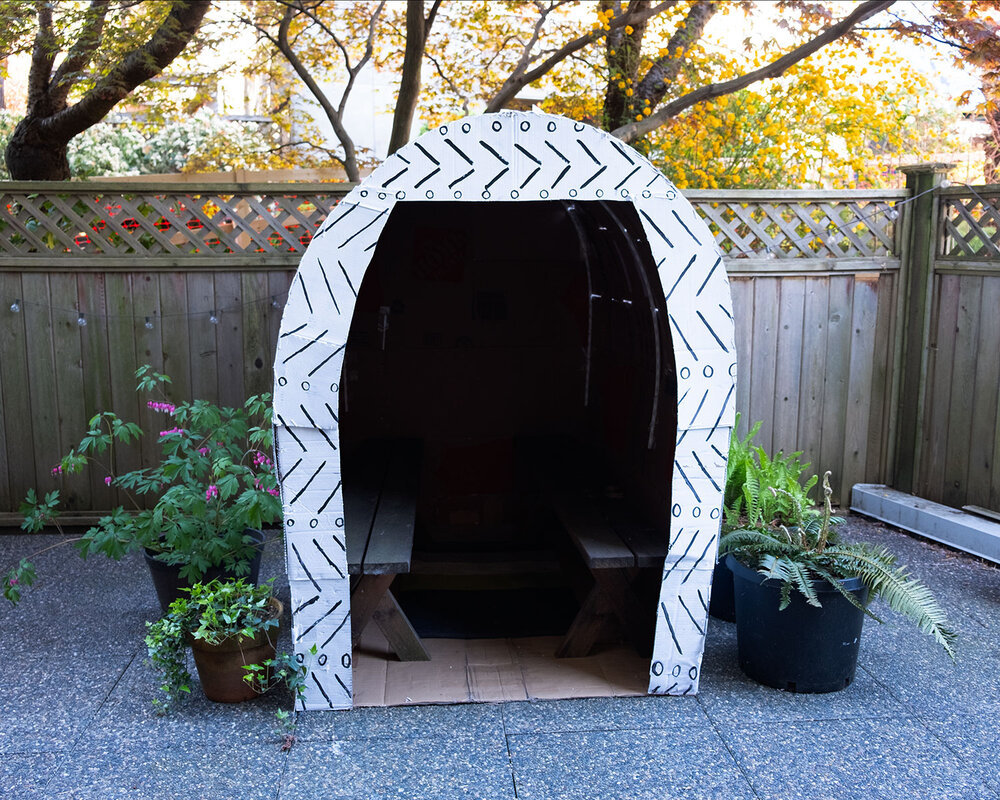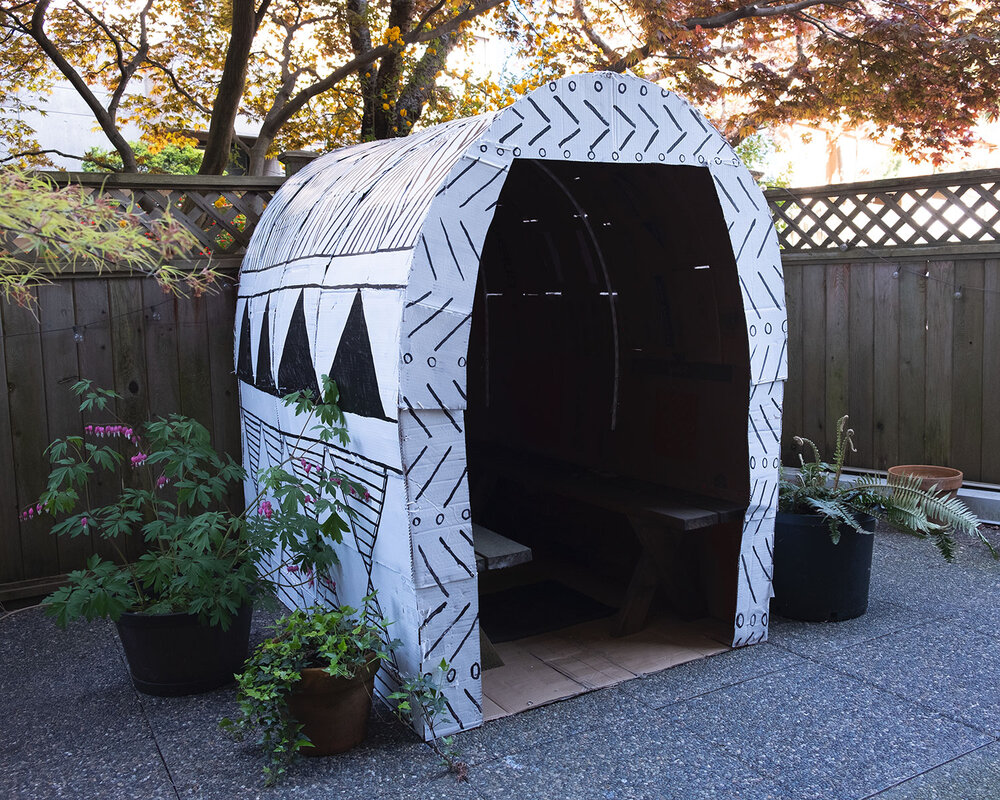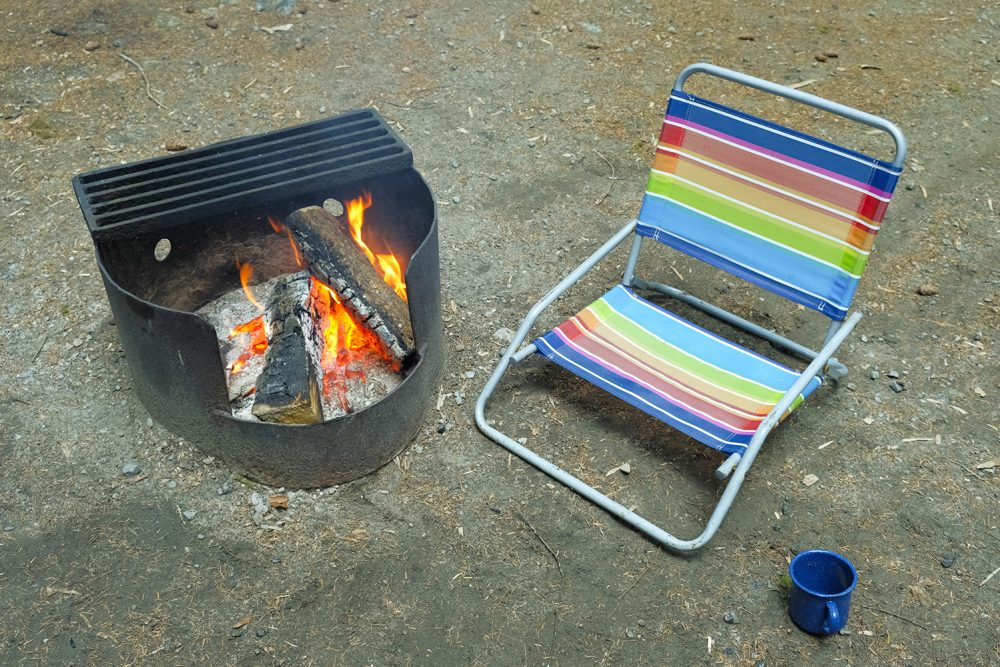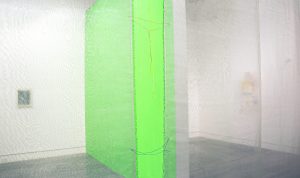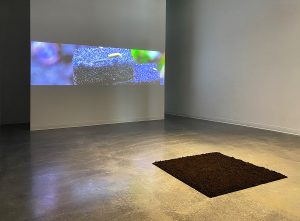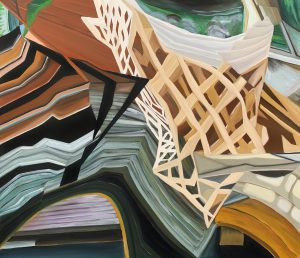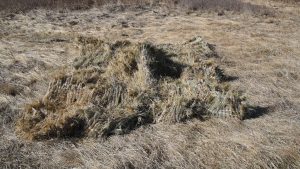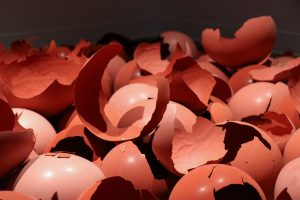Shelter 1 – 23
Jen Candela
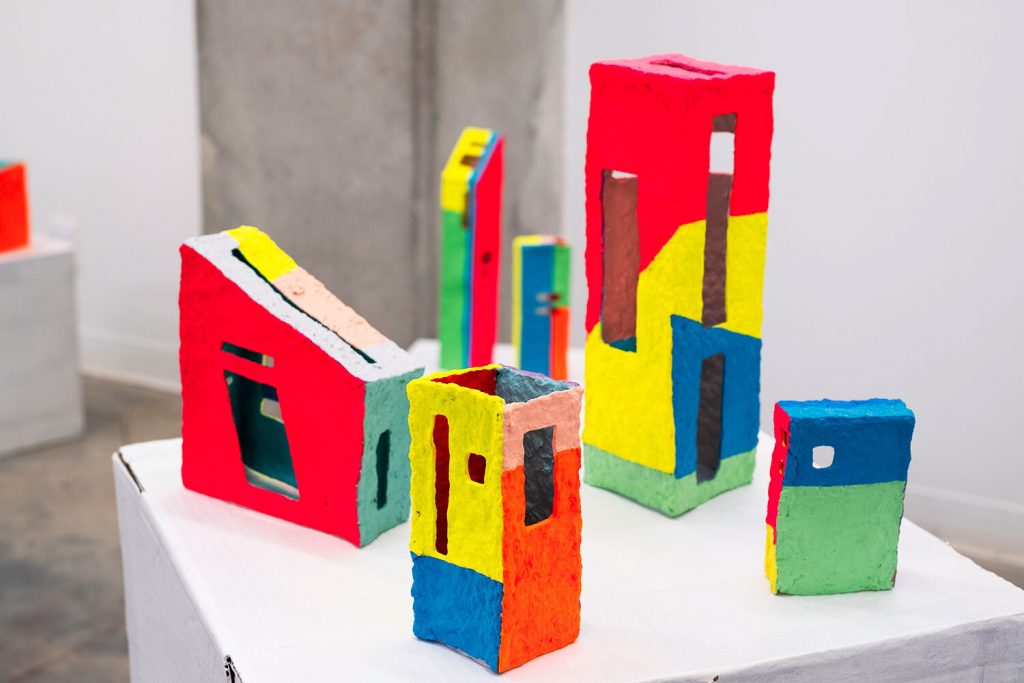
About my work
Making sculpture is a way for me to express internal landscapes outside of myself. It is primarily a pursuit of optimism, a means of transforming despair into something hopeful and inner turmoil into orderly structure. I use waste materials like cardboard and wood scraps because I am interested in the idea that discarded things can be remade into something positive and life-affirming; incorporating social elements such as exchange and collaboration, my work explores how far the transformation of materials can be taken – not just in a physical sense but in less tangible ways that become intentions and desired outcomes embedded in the sculptural object.
I draw influence from the architectural forms of neolithic dwellings, wattle and daub houses, and temporary living structures of all kinds. My recent works have centred around the theme of the shelter, which represents both a physical and mental space of refuge and safety as a strategy for survival. The creation of these spaces, however symbolic, feels particularly important to me at this moment of pandemic, climate crisis, and social inequality. The shelter embodies my desire and will to adapt to living on a damaged planet, and is an expression of protection and hope for life.
Shelter 23 (for everyone I miss)
Cardboard, flour, glue, latex and acrylic paint
2021
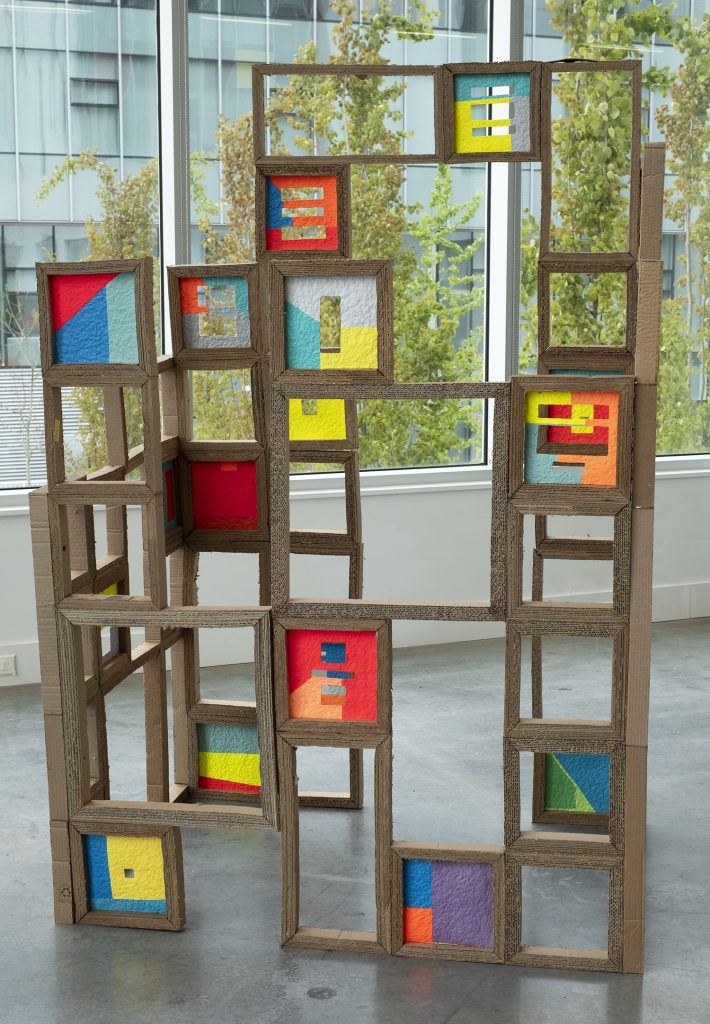
I was thinking a lot about relationships when making Shelter 23 – how vital they are to our sense of wellbeing and how much the pandemic has separated us from each other. Building the shelter became a way for me to pay tribute to people who have become absent or lost to me – not only over the last year but at other times in my life.
Shelter 23 is also about creating resilience and exploring what can be made from the scraps and waste materials that accumulate around us. It’s about using what’s at hand to mend and fill the gaps that open up in our lives.
21 shelters (46 Amazon boxes)
Cardboard, flour, latex and acrylic paint
2020

21 shelters (46 Amazon boxes) was inspired by the concept of a model city or habitat, an idealized place that embodied certain qualities such as collectivism, sustainability and hope. I made the work with as few inputs as possible and primarily from things that were discarded and readily available, like the cardboard Amazon box. I wanted to push this material in a new direction, experimenting with how far the transformation could go, and how many different ways I could undo/remake the Amazon box as a means to recapture/recirculate some of the dead resources it represents.
This transformation occurred not only in a physical way, but through less tangible means that involved collaboration with friends and neighbours, who helped in certain parts of the making process. I found myself thinking about them when making the objects, as though I was producing a specific piece for a certain person. With this in mind, I felt at times like I was making talismans that could ward off evil and sadness – totemic objects infused with the power to protect and shelter loved ones during this difficult time (and times to come).
Anderson Shelter, 1942 / 2020
Cardboard, tape, pvc pipe, acrylic and latex paint
2020
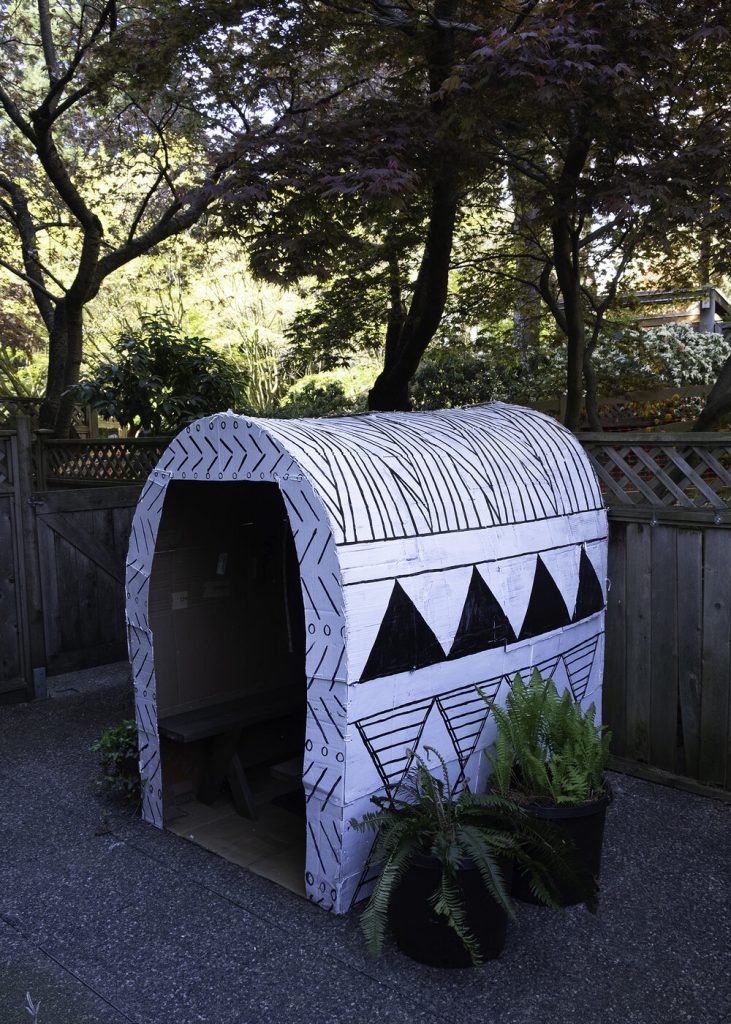
Anderson Shelter was made in March of 2020 as a direct response to the COVID-19 experience of “shelter in place”. I wanted to create a project I could engage my family in, particularly my 8 yr. old son who was not at school during that time. The shelter was a kind of play on words that turned the more holistic idea of shelter in place into a literal shelter that could buffer us from the tedium of pandemic. As I was planning the project, I remembered my mother’s experience with the air raid shelter during WWII in Britain. I reached out to her surviving siblings, my aunt and uncle, and asked them to recount their childhood memories of the shelter, which became part of the project as this recording. The act of gathering these family histories turned Anderson Shelter into a work that was as much about the present moment as it was about the unearthing of familial and cultural memory. As a site of remembrance, the Anderson Shelter is a significant historical object, not just for my family but for a whole generation of Brits that shared in the experience of it. It is a thing that continues to haunt the collective imagination – a kind of gathering place for social trauma some eighty years on.
In effect, Anderson Shelter became a way for me to fuse the difficulties of the past with those of the present; there is a comfort in knowing your loved ones have been through worse and survived – that hard times have come before and will inevitably pass. Anderson Shelter was modelled after specs of the original shelter – 4ft wide by 6 ft long by 6ft high. In place of the corrugated steel sheets, it was constructed from cobbled together items salvaged around my home: cardboard, packing tape, pvc pipe, leftover paint. The surface design elements refer back to earlier structures – the whitewashed crofter’s hut, and Bronze age dwellings found throughout the UK. Contrary to the original Anderson shelter, this structure was fragile; it only lasted a few weeks between March and April, but proved to be an engaging spectacle in the neighbourhood that sparked interest and conversation during a time of social isolation.

